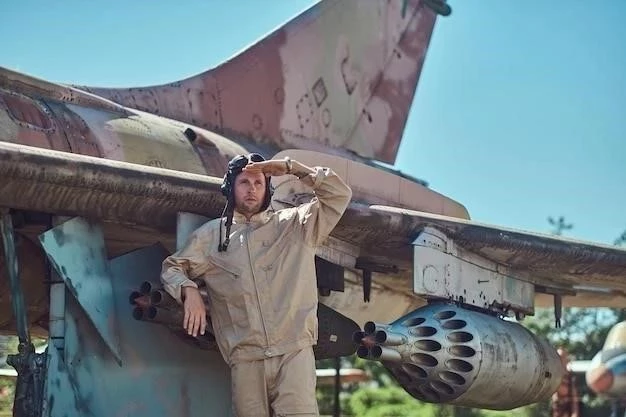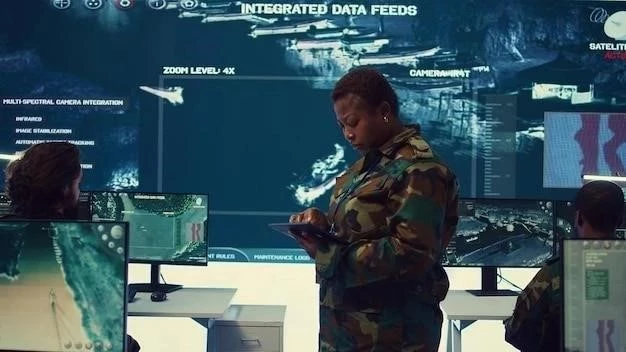Introduction
The role of the Personnel Navigant Enrôlé (PNE)‚ specifically the Observateur Aérien Mitrailleur (OAM) with MOS 6199‚ is a critical and multifaceted one within the armed forces. These individuals‚ often referred to as air observers‚ aerial observers‚ or gunners‚ are integral members of the flight crew and play a vital role in air warfare. Their expertise in aviation‚ weapons systems‚ and military technology contributes directly to the success of military operations and the defense of national interests.
Historical Context
The concept of aerial observation dates back to the early days of aviation. During World War I‚ aircraft were primarily used for reconnaissance‚ with observers tasked with identifying enemy positions‚ troop movements‚ and fortifications. As technology advanced‚ the role of the aerial observer evolved‚ incorporating tasks such as directing artillery fire‚ spotting targets for bombers‚ and even engaging in air-to-air combat. The development of specialized aircraft‚ such as the fighter-bomber‚ further expanded the responsibilities of the aerial observer;
The Role of the Observateur Aérien Mitrailleur (OAM)
The OAM is a highly skilled and versatile member of the flight crew. Their primary responsibilities include⁚
- Observation and Reconnaissance⁚ Utilizing advanced sensors and optical equipment‚ the OAM observes the battlefield‚ identifies targets‚ and relays critical information to command headquarters.
- Weapons Systems Operation⁚ The OAM is proficient in the operation of various weapons systems‚ including machine guns‚ cannons‚ and guided missiles‚ ensuring the effective engagement of targets.
- Air-to-Air Combat Support⁚ In combat situations‚ the OAM assists the pilot in identifying and engaging enemy aircraft‚ providing crucial situational awareness and target acquisition data.
- Target Acquisition and Designation⁚ The OAM uses sophisticated targeting systems to locate‚ identify‚ and designate targets for other aircraft‚ ground forces‚ or naval units.
- Electronic Warfare Support⁚ The OAM may be trained in electronic warfare techniques‚ including the detection‚ analysis‚ and jamming of enemy electronic signals‚ enhancing the aircraft’s survivability and mission effectiveness.
- Crew Coordination and Communication⁚ The OAM plays a crucial role in coordinating the actions of the flight crew‚ ensuring efficient communication and information sharing between the pilot and other crew members.
Training and Qualifications
Becoming an OAM requires rigorous training and a high level of physical and mental fitness. Candidates must undergo a demanding selection process‚ including⁚
- Physical Fitness Assessment⁚ Candidates must meet stringent physical standards to withstand the demands of flight operations and combat conditions.
- Psychological Evaluation⁚ A thorough psychological assessment is conducted to ensure the candidate possesses the mental fortitude‚ emotional stability‚ and decision-making abilities required for the role.
- Academic Requirements⁚ Candidates must possess a minimum level of education and demonstrate proficiency in mathematics‚ physics‚ and other relevant subjects.
- Specialized Training⁚ After selection‚ candidates undergo specialized training in aviation‚ weapons systems‚ navigation‚ communication‚ and other essential skills. This training includes both classroom instruction and practical exercises in flight simulators and real aircraft.
Skills and Abilities
To excel as an OAM‚ individuals must possess a unique combination of skills and abilities‚ including⁚
- Sharp Observation Skills⁚ The ability to quickly and accurately identify targets‚ assess situations‚ and interpret data is paramount.
- Technical Proficiency⁚ A deep understanding of aircraft systems‚ weapons systems‚ and electronic warfare equipment is essential.
- Communication Skills⁚ Clear and concise communication with the pilot‚ other crew members‚ and ground control is crucial for mission success.
- Decision-Making Abilities⁚ The OAM must be able to make quick and decisive decisions under pressure‚ often in complex and rapidly changing situations.
- Physical and Mental Stamina⁚ The demands of flight operations‚ particularly in combat environments‚ require a high level of physical and mental endurance.
Importance of the OAM Role
The OAM plays a pivotal role in modern air warfare‚ contributing significantly to the success of military operations; Their expertise in observation‚ weapons systems‚ and electronic warfare enhances the aircraft’s capabilities‚ enabling it to⁚
- Identify and Engage Targets⁚ The OAM’s ability to detect and locate targets with precision allows the aircraft to effectively engage enemy forces.
- Provide Situational Awareness⁚ The OAM’s observations and data collection provide critical situational awareness to the flight crew and command headquarters.
- Enhance Survivability⁚ The OAM’s proficiency in electronic warfare techniques helps protect the aircraft from enemy threats and improves its overall survivability.
- Support Ground and Naval Forces⁚ The OAM’s observations and target designation capabilities provide vital support to ground and naval forces‚ enhancing their effectiveness and mission success.
Career Paths and Advancement
The OAM role offers a rewarding career path with opportunities for advancement within the armed forces. With experience and demonstrated competence‚ OAMs can progress to leadership positions‚ including⁚
- Flight Instructor⁚ Training future generations of OAMs.
- Weapons Systems Officer⁚ Specializing in the operation and maintenance of advanced weapons systems.
- Aircrew Commander⁚ Leading and coordinating the actions of the flight crew.
- Staff Officer⁚ Serving in command and staff positions within the military‚ contributing to strategic planning and decision-making.
Conclusion
The Personnel Navigant Enrôlé Observateur Aérien Mitrailleur MOS 6199 is a highly skilled and specialized role within the armed forces. These individuals play a critical role in air warfare‚ contributing significantly to the success of military operations and the defense of national interests. Their expertise in aviation‚ weapons systems‚ and military technology makes them invaluable assets to the flight crew and essential for maintaining air defense capabilities. The OAM role offers a challenging and rewarding career path with opportunities for personal and professional growth within the armed forces.





L’article est une lecture incontournable pour tous ceux qui s’intéressent à la guerre aérienne et au rôle des observateurs aériens. L’auteur présente de manière claire et concise les responsabilités et les compétences de l’OAM, ainsi que l’importance de cette fonction dans le contexte des opérations militaires modernes. La description des technologies et des systèmes d’armes utilisés par l’OAM est particulièrement intéressante.
L’article fournit une analyse complète et approfondie du rôle de l’Observateur Aérien Mitrailleur (OAM) dans les forces armées. L’auteur met en lumière l’importance de cette fonction dans le contexte de la guerre moderne, en soulignant les compétences techniques et tactiques nécessaires à l’OAM pour réussir dans son rôle. La description des responsabilités et des défis liés à cette fonction est particulièrement instructive.
L’article présente un aperçu complet et pertinent du rôle de l’OAM dans les opérations militaires. La clarté de l’exposé permet au lecteur de comprendre les défis et les responsabilités inhérents à cette fonction. L’accent mis sur les compétences techniques et tactiques nécessaires à l’OAM souligne l’importance d’une formation rigoureuse et d’une expertise approfondie dans le domaine de l’aviation et des systèmes d’armes.
L’article offre un aperçu fascinant du rôle de l’OAM dans les opérations militaires. L’auteur met en évidence l’importance de cette fonction dans le contexte de la guerre moderne, en soulignant les compétences techniques et tactiques nécessaires à l’OAM pour réussir dans son rôle. La description des responsabilités et des défis liés à cette fonction est particulièrement instructive.
L’article offre une perspective précieuse sur le rôle de l’OAM dans les forces armées. L’auteur met en évidence les compétences et les connaissances essentielles nécessaires à l’exercice de cette fonction, ainsi que les défis et les opportunités qui s’y rattachent. La description des technologies et des systèmes d’armes utilisés par l’OAM permet au lecteur de mieux comprendre la complexité de cette spécialité militaire.
L’article met en évidence l’importance stratégique de l’OAM dans le contexte de la guerre moderne. L’auteur souligne la nécessité pour l’OAM de posséder une expertise approfondie en matière d’observation, de reconnaissance et de ciblage, ainsi que de compétences techniques en matière de systèmes d’armes. La description de l’interaction entre l’OAM et le pilote met en lumière la nature collaborative de cette fonction.
Cet article fournit une analyse approfondie et éclairante du rôle crucial de l’Observateur Aérien Mitrailleur (OAM) dans les forces armées. L’auteur met en lumière l’évolution historique de la fonction d’observateur aérien, depuis ses débuts en reconnaissance jusqu’à son rôle complexe dans la guerre aérienne moderne. La description détaillée des responsabilités de l’OAM, notamment en matière d’observation, d’utilisation des systèmes d’armes et de soutien au combat aérien, met en évidence l’importance de cette spécialité militaire.